Physical Library
- Home
- Physical Library

What’s Right with Macroeconomics ?
Global crises are very rare events. After the Great Depression and the Great Stagflation, new macroeconomic paradigms associated with a new policy regime emerged. This book addresses how some macroeconomic ideas have failed, and examines which theories re
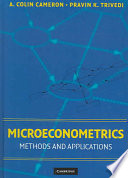
Microeconometrics : Methods and Applications
This book provides the most comprehensive treatment to date of microeconometrics, the analysis of individual-level data on the economic behavior of individuals or firms using regression methods for cross section and panel data. The book is oriented to the practitioner. A basic understanding of the linear regression model with matrix algebra is assumed. The text can be used for a microeconometrics course, typically a second-year economics PhD course ; for data-oriented applied microeconometrics field courses ; and as a reference work for graduate students and applied researchers who wish to fill in gaps in their toolkit. Distinguishing features of the book include emphasis on nonlinear models and robust inference, simulation-based estimation, and problems of complex survey data. The book makes frequent use of numerical examples based on generated data to illustrate the key models and methods. More substantially, it systematically integrates into the text empirical illustrations based on seven large and exceptionally rich data sets.
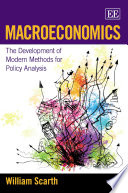
Macroeconomics : The Development of Modern Methods for Policy Analysis
This important textbook offers a comprehensive look into the two main traditions in contemporary macroeconomics _ New Classical and Keynesian _ and examines the work of economists who have drawn on principles from both traditions to form a new, integr
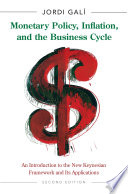
Monetary Policy, Inflation, and the Business Cycle : An Introduction to the New Keynesian Framework and Its Applications - Second Edition
This revised second edition of Monetary Policy, Inflation, and the Business Cycle provides a rigorous graduate-level introduction to the New Keynesian framework and its applications to monetary policy. The New Keynesian framework is the workhorse for the analysis of monetary policy and its implications for inflation, economic fluctuations, and welfare. A backbone of the new generation of medium-scale models under development at major central banks and international policy institutions, the framework provides the theoretical underpinnings for the price stability–oriented strategies adopted by most central banks in the industrialized world.
Using a canonical version of the New Keynesian model as a reference, Jordi Galí explores various issues pertaining to monetary policy’s design, including optimal monetary policy and the desirability of simple policy rules. He analyzes several extensions of the baseline model, allowing for cost-push shocks, nominal wage rigidities, and open economy factors. In each case, the effects on monetary policy are addressed, with emphasis on the desirability of inflation-targeting policies. New material includes the zero lower bound on nominal interest rates and an analysis of unemployment’s significance for monetary policy.
The most up-to-date introduction to the New Keynesian framework available
A single benchmark model used throughout
New materials and exercises included
An ideal resource for graduate students, researchers, and market analysts
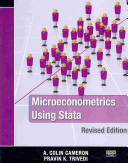
Microeconometrics Using Stata, Revised Edition
A complete and up-to-date survey of microeconometric methods available in Stata, Microeconometrics Using Stata, Revised Edition is an outstanding introduction to microeconometrics and how to execute microeconometric research using Stata. It covers topics left out of most microeconometrics textbooks and omitted from basic introductions to Stata.
This revised edition has been updated to reflect the new features available in Stata 11 that are useful to microeconomists. Instead of using mfx and the user-written margeff commands, the authors employ the new margins command, emphasizing both marginal effects at the means and average marginal effects. They also replace the xi command with factor variables, which allow you to specify indicator variables and interaction effects. Along with several new examples, this edition presents the new gmm command for generalized method of moments and nonlinear instrumental-variables estimation. In addition, the chapter on maximum likelihood estimation incorporates enhancements made to ml in Stata 11.
Throughout the book, the authors use simulation methods to illustrate features of the estimators and tests described and provide an in-depth Stata example for each topic discussed. They also show how to use Stata’s programming features to implement methods for which Stata does not have a specific command. The unique combination of topics, intuitive introductions to methods, and detailed illustrations of Stata examples make this book an invaluable, hands-on addition to the library of anyone who uses microeconometric methods.
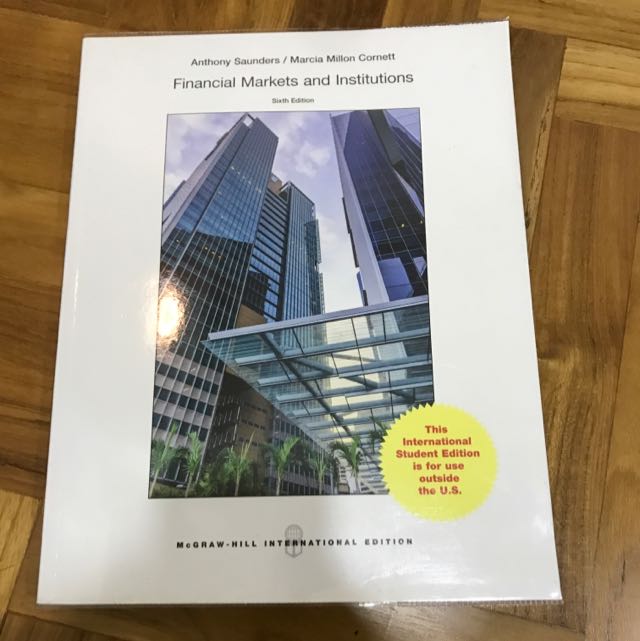
Financial Markets and Institutions (sixth edition)
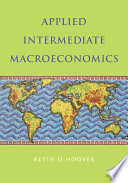
Applied Intermediate Macroeconomics
This textbook offers a complete course in applied macroeconomics at the intermediate level that emphasizes the application of economic theory to real-world data and policy. Topics covered include national and international income, financial accounts, business cycles, financial markets, economic growth, labor markets, aggregate supply and demand, inflation, and monetary and fiscal policy. The text is unique in developing a detailed toolkit of elementary statistics and graphical techniques for economic data. A strength is its detailed treatment of national and international financial markets and the institutions of monetary and fiscal policy, which makes it especially helpful in understanding recent economic crises. The Web site for the text is found at http://www.appliedmacroeconomics.com.
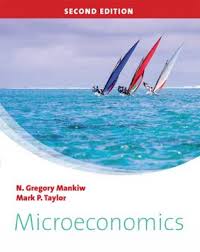
Microeconomics
Now firmly established as one of the leading economics principles texts in the UK and Europe, this exciting new fourth edition of Economics by N. Gregory Mankiw (Harvard University) and Mark P. Taylor (Washington University), has been fully updated. There are new sections covering microeconomic topics and concepts in more depth, whilst at the same time retaining the book’s reputation for clarity, authority and real world relevance.
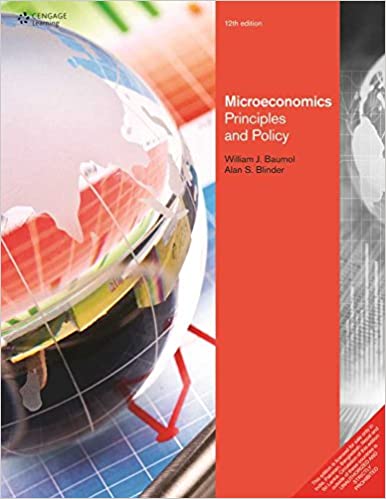
Microeconomics : Principles and Policy 12th Edition
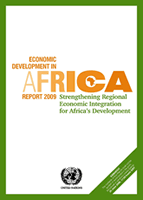
Economic Development in Africa Report 2009 : Strengthening regional economic integration for africa’s development
The global financial crisis requires the re-examination of current approaches to international development. One area which is important for Africa is the role of regional integration in addressing the long-standing structural weaknesses which have lowered the long-term growth performance of most countries on the continent, increased their economic vulnerability and undermined efforts to reduce poverty.
The Economic Development in Africa Report 2009 focuses on ways of strengthening regional economic integration for Africa´s development. It complements existing institutional analyses of regional integration in Africa with an economic analysis of trade in goods and services, migration and investment.
The report surveys recent trends in these flows and assesses the potential for increasing them in ways that will support economic development.
The report finds that - when designed and implemented within a broader development strategy to promote economic diversification, structural changes and technological development - regional integration could help enhance productive capacities of African economies, realize economies of scale, improve competitiveness and serve as a launching pad for African economies´ effective participation in the global economy.
The Report is organized as follows :
Chapter 1 provides a brief assessment of regional integration initiatives over the past years in Africa. It describes the historical evolution in African regional integration efforts, culminating with the decision to create an African Economic Community. It also provides an assessment of regional integration initiatives in the areas of trade, investment and migration.
Chapter 2 analyses intraregional trade performance in goods, the direction and composition of Africa’s trade flows as well as their determinants. The chapter also provides an answer to the question whether trade flows among African economies are at their potential or whether there are prospects for expansion.
Chapter 3 examines the global significance and scope of foreign direct investment (FDI) flows among African countries, the determinants, and the geographical and sectoral distribution of such flows.
Chapter 4 explores intraregional performance in two emerging areas of regional integration in Africa, namely trade in services and migration. Hindrances to expand intraregional cooperation in those areas are discussed and proposals are made to improve the performance in those areas.
Chapter 5 summarizes the main findings of the report and gives some policy recommendations about whether and how to meaningfully use regional economic integration for development and as a building bloc for Africa’s participation and integration into the world economy.
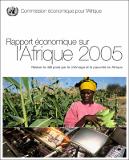
Rapport économique sur l’Afrique 2005 : Relever le défi posé par le chômage et la pauvreté en Afrique
L’Afrique, continent le plus pauvre du monde, doit de toute urgence créer davantage d’emplois pour éliminer le spectre de la famine et de la malnutrition et améliorer le niveau de vie de la population qui demeure faible dans l’ensemble.
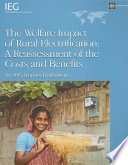
The Welfare Impact of Rural Electrification : A Reassessment of the Costs and Benefits ; an IEG Impact Evaluation
Rural electrification can have many benefits-not only bringing lighting, but improving the quality of health care, spreading information and supporting productive enterprises. The extent of these benefits has been questioned, arguing that they may be insufficient to justify the investment costs. This book quantifies these benefits. It finds that the benefits can indeed be high, substantially outweighing the costs, and that consumer willingness to pay is generally sufficient to achieve financial sustainability. However, benefits could be increased further by providing smart subsidies to assist connections for poorer households, promote productive uses and further consumer education.
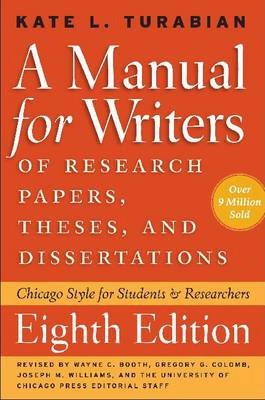
A Manual for Writers of Research Papers, Theses, and Dissertations
A Manual for Writers of Research Papers, Theses, and Dissertations is a style guide for writing and formatting research papers, theses, and dissertations and is published by the University of Chicago Press. The work is often referred to as "Turabian" or by the shortened title, A Manual for Writers.
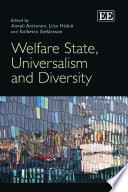
Welfare State, Universalism and Diversity
’This book is a most timely academic intervention. The concept of universalism is central to social policy and welfare state development yet it is rarely explored with such attention to its time and place specificities as in this book. Nordic and Brit
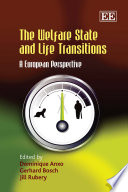
The Welfare State and Life Transitions : A European Perspective
The Welfare State and Life Transitions is a major contribution towards a new generation of research on welfare regimes. It reveals the complex and dynamic character of welfare systems and their varying implications for different social groups. Drawing tog
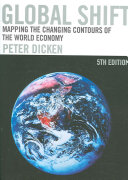
Global Shift, Fifth Edition : Mapping the Changing Contours of the World Economy
This bestselling work is the definitive text on globalization. Peter Dicken provides a comprehensive, balanced yet critical account of globalization processes and their sweeping, highly uneven effects on people’s lives. Each chapter reflects current globalization and antiglobalization debates, the latest empirical developments, and new ideas about the shaping and reshaping of production, distribution, and consumption in the world economy. Of special utility are detailed case studies of key global industries and more than 250 specially designed figures and tables. To facilitate use in the classroom, the figures and tables are also available online as PowerPoint slides.
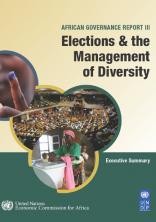
African Governance Report III : Elections & the Management of Diversity
The African Governance Report, the most comprehensive report on governance in Africa, assesses and monitors the progress of African countries on governance, identifies capacity gaps in governance institutions and proposes policies and strategic interventions to improve governance on the continent.
This third edition of the Report, while continuing to monitor governance trends, adopts a thematic approach : elections and the management of diversity in Africa. Elections are central to democratic governance and the political management of diversity in plural societies. While elections are held with greater regularity in Africa, their content and quality
remains suspect in many countries, with Africa’s rich diversity deployed as a combustive tool in electoral conflicts. Elections have often triggered conflict, with violence, tensions, acrimonies and sharp elite divisions surrounding electoral processes and outcomes—a worrying trend for Africa’s democratic future.
This Report investigates elections in the face of managing diversity in Africa. It recommends major electoral, institutional, political and constitutional reforms to enable elections to facilitate the democratic management of diversity, while significantly improving their quality and credibility. These include reform of the party system to make it more inclusive and democratic, a move to more proportional electoral systems, and an increase in the autonomy and effectiveness of election management boards. The Report argues that regional and subregional initiatives and frameworks for elections, democracy and governance have to be implemented and monitored to improve electoral performance and promote democratic consolidation and stability.
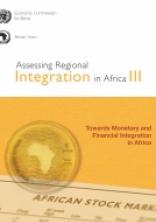
Assessing Regional Integration in Africa III
Regional integration remains a viable strategy for Africa to achieve sustainable economic growth and development, reduce poverty and participate effectively in the globalization process. This vision is embodied in the Abuja Treaty Establishing the African Economic Community, and is re-emphasised in the Constitutive Act of the African Union. These blueprints include a roadmap for a monetary union and the harmonization and integration of financial systems and markets across the continent. Achievement of these goals requires a climate of macroeconomic stability, monetary and financial integration and effective trade and economic relations.
Monetary unification and financial integration overcome problems associated with multiple and non-convertible currencies and with underdeveloped capital and financial markets and would also propel the continent towards establishment of the envisioned African Monetary Union. Several Regional Economic Communities (RECs) have adopted common macroeconomic policy frameworks and convergence targets, underpinned by monetary and financial cooperation.
As follow-up to ARIA-II, ARIA-III focuses on gauging the performance of African RECs in the areas of macroeconomic convergence, monetary cooperation, and financial integration. The report finds that although there are some successes, African countries are still experiencing enormous difficulties in achieving the macroeconomic convergence criteria set by their RECs, such as targets on inflation, debt-to-GDP ratio, and deficit-to-GDP ratio. The assessment also indicates that despite some financial developments, African financial market activities remain shallow, with capital markets characterized by low capitalization and liquidity.
The report also provides policymakers with recommendations on how to deepen monetary and financial integration on the continent and create an enabling macroeconomic environment for the continent.
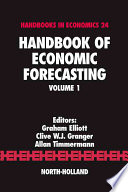
Handbook of Economic Forecasting, Volume 1
Research on forecasting methods has made important progress over recent years and these developments are brought together in the Handbook of Economic Forecasting. The handbook covers developments in how forecasts are constructed based on multivariate time-series models, dynamic factor models, nonlinear models and combination methods. The handbook also includes chapters on forecast evaluation, including evaluation of point forecasts and probability forecasts and contains chapters on survey forecasts and volatility forecasts. Areas of applications of forecasts covered in the handbook include economics, finance and marketing.
*Addresses economic forecasting methodology, forecasting models, forecasting with different data structures, and the applications of forecasting methods
*Insights within this volume can be applied to economics, finance and marketing disciplines
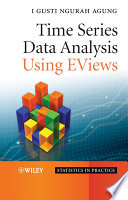
Time Series Data Analysis Using EViews
Do you want to recognize the most suitable models for analysis of statistical data sets ?
This book provides a hands-on practical guide to using the most suitable models for analysis of statistical data sets using EViews - an interactive Windows-based computer software program for sophisticated data analysis, regression, and forecasting - to define and test statistical hypotheses. Rich in examples and with an emphasis on how to develop acceptable statistical models, Time Series Data Analysis Using EViews is a perfect complement to theoretical books presenting statistical or econometric models for time series data. The procedures introduced are easily extendible to cross-section data sets.
The author :
- Provides step-by-step directions on how to apply EViews software to time series data analysis
- Offers guidance on how to develop and evaluate alternative empirical models, permitting the most appropriate to be selected without the need for computational formulae
- Examines a variety of times series models, including continuous growth, discontinuous growth, seemingly causal, regression, ARCH, and GARCH as well as a general form of nonlinear time series and nonparametric models
- Gives over 250 illustrative examples and notes based on the author’s own empirical findings, allowing the advantages and limitations of each model to be understood
- Describes the theory behind the models in comprehensive appendices
Provides supplementary information and data sets
An essential tool for advanced undergraduate and graduate students taking finance or econometrics courses. Statistics, life sciences, and social science students, as well as applied researchers, will also find this book an invaluable resource.
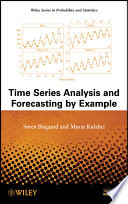
Time Series Analysis and Forecasting by Example
Time Series Analysis and Forecasting by Example provides the fundamental techniques in time series analysis using various examples. By introducing necessary theory through examples that showcase the discussed topics, the authors successfully help readers develop an intuitive understanding of seemingly complicated time series models and their implications.
The book presents methodologies for time series analysis in a simplified, example-based approach. Using graphics, the authors discuss each presented example in detail and explain the relevant theory while also focusing on the interpretation of results in data analysis. Following a discussion of why autocorrelation is often observed when data is collected in time, subsequent chapters explore related topics, including :
- Graphical tools in time series analysis
- Procedures for developing stationary, non-stationary, and seasonal models
- How to choose the best time series model
- Constant term and cancellation of terms in ARIMA models
- Forecasting using transfer function-noise models
The final chapter is dedicated to key topics such as spurious relationships, autocorrelation in regression, and multiple time series. Throughout the book, real-world examples illustrate step-by-step procedures and instructions using statistical software packages such as SAS®, JMP, Minitab, SCA, and R. A related Web site features PowerPoint slides to accompany each chapter as well as the book’s data sets.
With its extensive use of graphics and examples to explain key concepts, Time Series Analysis and Forecasting by Example is an excellent book for courses on time series analysis at the upper-undergraduate and graduate levels. it also serves as a valuable resource for practitioners and researchers who carry out data and time series analysis in the fields of engineering, business, and economics.
Methods for Applied Macroeconomic Research
The last twenty years have witnessed tremendous advances in the mathematical, statistical, and computational tools available to applied macroeconomists. This rapidly evolving field has redefined how researchers test models and validate theories. Yet until now there has been no textbook that unites the latest methods and bridges the divide between theoretical and applied work.
Fabio Canova brings together dynamic equilibrium theory, data analysis, and advanced econometric and computational methods to provide the first comprehensive set of techniques for use by academic economists as well as professional macroeconomists in banking and finance, industry, and government. This graduate-level textbook is for readers knowledgeable in modern macroeconomic theory, econometrics, and computational programming using RATS, MATLAB, or Gauss. Inevitably a modern treatment of such a complex topic requires a quantitative perspective, a solid dynamic theory background, and the development of empirical and numerical methods—which is where Canova’s book differs from typical graduate textbooks in macroeconomics and econometrics. Rather than list a series of estimators and their properties, Canova starts from a class of DSGE models, finds an approximate linear representation for the decision rules, and describes methods needed to estimate their parameters, examining their fit to the data. The book is complete with numerous examples and exercises.
Today’s economic analysts need a strong foundation in both theory and application. Methods for Applied Macroeconomic Research offers the essential tools for the next generation of macroeconomists.
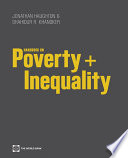
Handbook on Poverty + Inequality
’Handbook on Poverty + Inequality’ was originally designed to support training courses in poverty analysis and inequality. The ’Handbook’ begins with an explanatory text that includes numerous examples, multiple-choice questions to ensure active learning, and extensive practical exercises that use Stata statistical software. The ’Handbook’ will help researchers and evaluators in charge of preparing background materials for Poverty Reducation Strategy Papers (PRSPs) and those responsible for monitoring and evaluating poverty reduction programs and policies. The World Bank Institute has used the ’Handbook’ in training workshops in countries from Bangladesh, India, and Pakistan, to Cambodia, Indonesia, the Philippines, and Thailand, to Malawi and Tanzania, as well as in university courses on poverty and in distance education courses with participants from Asian and African countries. The ’Handbook’ has also been used in an online asynchronous course with more than 200 participants worldwide. Using the feedback from these courses, the authors have created a clearly-written text that balances rigor with practicality. The ’Handbook’ is designed to be accessible to people with a university-level background in science or the social sciences. It is an invaluable tool for policy analysts, researchers, college students, and government officials working on policy issues related to poverty and inequality.
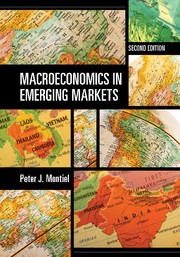
Macroeconomics in Emerging Markets
The macroeconomic experience of emerging and developing economies has tended to be quite different from that of industrial countries. Compared to industrial countries, emerging and developing economies have tended to be much more unstable, with more severe boom/bust cycles, episodes of high inflation and a variety of financial crises. This textbook describes how the standard macroeconomic models that are used in industrial countries can be modified to help understand this experience and how institutional and policy reforms in emerging and developing economies may affect their future macroeconomic performance. This second edition differs from the first in offering : extensive new material on themes such as fiscal institutions, inflation targeting, emergent market crises, and the Great Recession ; numerous application boxes ; end-of-chapter questions ; references for each chapter ; more diagrams, less taxonomy, and a more reader-friendly narrative ; and enhanced integration of all parts of the work.
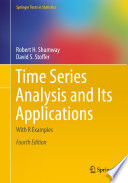
Time series analysis and its applications
The fourth edition of this popular graduate textbook, like its predecessors, presents a balanced and comprehensive treatment of both time and frequency domain methods with accompanying theory. Numerous examples using nontrivial data illustrate solutions to problems such as discovering natural and anthropogenic climate change, evaluating pain perception experiments using functional magnetic resonance imaging, and monitoring a nuclear test ban treaty.
The book is designed as a textbook for graduate level students in the physical, biological, and social sciences and as a graduate level text in statistics. Some parts may also serve as an undergraduate introductory course. Theory and methodology are separated to allow presentations on different levels. In addition to coverage of classical methods of time series regression, ARIMA models, spectral analysis and state-space models, the text includes modern developments including categorical time series analysis, multivariate spectral methods, long memory series, nonlinear models, resampling techniques, GARCH models, ARMAX models, stochastic volatility, wavelets, and Markov chain Monte Carlo integration methods.
This edition includes R code for each numerical example in addition to Appendix R, which provides a reference for the data sets and R scripts used in the text in addition to a tutorial on basic R commands and R time series. An additional file is available on the book’s website for download, making all the data sets and scripts easy to load into R.
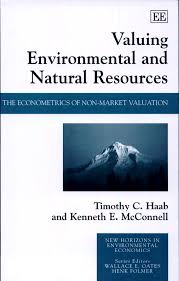
Valuing Environmental and Natural Resources : The Econometrics of Non-market Valuation
Non-market valuation has become a broadly accepted and widely practised means of measuring the economic values of the environment and natural resources. This book provides a guide to the statistical and econometric practices that economists employ in estimating non-market values.
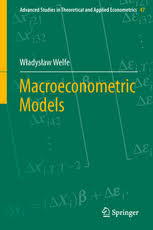
Macroeconometric Models (Advanced Studies in Theoretical and Applied Econometrics)
This book gives a comprehensive description of macroeconometric modeling and its development over time. The first part depicts the history of macroeconometric model building, starting with Jan Tinbergen’s and Lawrence R. Klein’s contributions. It is unique in summarizing the development and specific structure of macroeconometric models built in North America, Europe, and various other parts of the world. The work thus offers an extensive source for researchers in the field. The second part of the book covers the systematic characteristics of macroeconometric models. It includes the household and enterprise sectors, disequilibria, financial flows, and money market sectors.
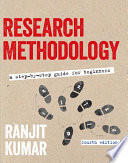
Research Methodology : A Step-by-step Guide for Beginners
Research Methodology : A Step by Step Guide for Beginners has been written specifically for those with no previous experience of research or research methodology. Written in a logical and accessible style and providing helpful techniques and examples, it breaks the process of designing and doing a research project into eight manageable operational steps. The book guides you through your project from beginning to end by offering practical advice on :
formulating a research question ethical considerations carrying out a literature review choosing a research design selecting a sample collecting and analysing qualitative and quantitative data writing a research report.
The book is essential reading for undergraduate and postgraduate students in the social sciences embarking on quantitative or qualitative research projects.
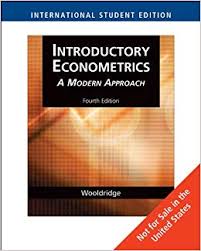
Introductory Econometrics : a modern approach, 4th edition
INTRODUCTORY ECONOMETRICS : A MODERN APPROACH, 4e illustrates how empirical researchers think about and apply econometric methods in real-world practice. The text’s unique approach reflects the fact that undergraduate econometrics has moved beyond just a set of abstract tools to being genuinely useful for answering questions in business, policy evaluation, and forecasting environments. The systematic approach, which reduces clutter by introducing assumptions only as they are needed, makes absorbing the material easier and leads to better econometric practices. Its unique organization separates topics by the kinds of data being analyzed, leading to an appreciation for the important issues that arise in drawing conclusions from the different kinds of data economists use. Packed with relevant applications, INTRODUCTORY ECONOMETRICS offers a wealth of interesting data sets that can be used to reproduce the examples in the text or as the starting point for original research projects.
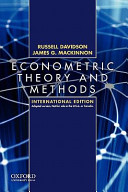
Econometric Theory and Methods : International Edition
Econometric Theory and Methods International Edition provides a unified treatment of modern econometric theory and practical econometric methods. The geometrical approach to least squares is emphasized, as is the method of moments, which is used to motivate a wide variety of estimators and tests. Simulation methods, including the bootstrap, are introduced early and used extensively. The book deals with a large number of modern topics. In addition to bootstrap and Monte Carlo tests, these include sandwich covariance matrix estimators, artificial regressions, estimating functions and the generalized method of moments, indirect inference, and kernel estimation. Every chapter incorporates numerous exercises, some theoretical, some empirical, and many involving simulation.
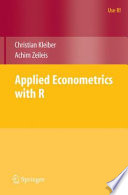
Applied Econometrics with R
R is a language and environment for data analysis and graphics. It may be considered an implementation of S, an award-winning language initially - veloped at Bell Laboratories since the late 1970s. The R project was initiated by Robert Gentleman and Ross Ihaka at the University of Auckland, New Zealand, in the early 1990s, and has been developed by an international team since mid-1997. Historically, econometricians have favored other computing environments, some of which have fallen by the wayside, and also a variety of packages with canned routines. We believe that R has great potential in econometrics, both for research and for teaching. There are at least three reasons for this : (1) R is mostly platform independent and runs on Microsoft Windows, the Mac family of operating systems, and various ?avors of Unix/Linux, and also on some more exotic platforms. (2) R is free software that can be downloaded and installed at no cost from a family of mirror sites around the globe, the Comprehensive R Archive Network (CRAN) ; hence students can easily install it on their own machines. (3) R is open-source software, so that the full source code is available and can be inspected to understand what it really does, learn from it, and modify and extend it. We also like to think that platform independence and the open-source philosophy make R an ideal environment for reproducible econometric research.
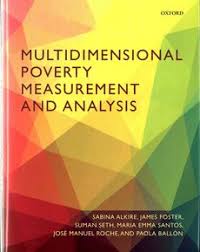
Multidimensional Poverty Measurement and Analysis
Multidimensional poverty measurement and analysis is evolving rapidly. Notably, it has informed the publication of the Multidimensional Poverty Index (MPI) estimates in the Human Development Reports of the United Nations Development Programme since 2010, and the release of national poverty measures in Mexico, Colombia, Bhutan, the Philippines and Chile. The academic response has been similarly swift, with related articles published in both theoretical and applied journals. The high and insistent demand for in-depth and precise accounts of multidimensional poverty measurement motivates this book, which is aimed at graduate students in quantitative social sciences, researchers of poverty measurement, and technical staff in governments and international agencies who create multidimensional poverty measures. The book is organized into four elements. The first introduces the framework for multidimensional measurement and provides a lucid overview of a range of multidimensional techniques and the problems each can address. The second part gives a synthetic introduction of ’counting’ approaches to multidimensional poverty measurement and provides an in-depth account of the counting multidimensional poverty measurement methodology developed by Alkire and Foster, which is a straightforward extension of the well-known Foster-Greer-Thorbecke poverty measures that had a significant and lasting impact on income poverty measurement. The final two parts deal with the pre-estimation issues such as normative choices and distinctive empirical techniques used in measure design, and the post-estimation issues such as robustness tests, statistical inferences, comparisons over time, and assessments of inequality among the poor.
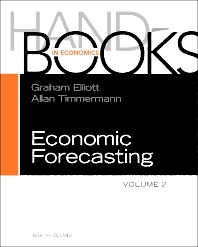
Economic Forecasting, Volumes 2A and 2B
The highly prized ability to make financial plans with some certainty about the future comes from the core fields of economics. In recent years the availability of more data, analytical tools of greater precision, and ex post studies of business decisions have increased demand for information about economic forecasting. Volumes 2A and 2B, which follows Nobel laureate Clive Granger’s Volume 1 (2006), concentrate on two major subjects. Volume 2A covers innovations in methodologies, specifically macroforecasting and forecasting financial variables. Volume 2B investigates commercial applications, with sections on forecasters’ objectives and methodologies. Experts provide surveys of a large range of literature scattered across applied and theoretical statistics journals as well as econometrics and empirical economics journals. The Handbook of Economic Forecasting Volumes 2A and 2B provide a unique compilation of chapters giving a coherent overview of forecasting theory and applications in one place and with up-to-date accounts of all major conceptual issues.
Intro
Recent post
-

Micenas placerat nibh loreming fentum
Sep 25, 2016 -

Integer suscipit sit amet
Sep 25, 2016 -

Praeent vehicula neget tempus
Sep 25, 2016




